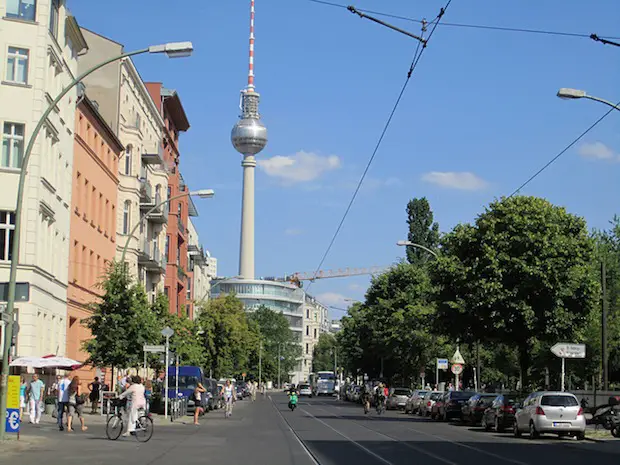Beyond Sandy: How Climate Change Has Affected Cities Worldwide
In the final days of October, the world gaped in horror at the images of the devastation left by hurricane Sandy. Perhaps the most attention-grabbing were the photos taken of New York: the Manhattan Skyline blacked out, the iconic subway system turned into a virtual swimming pool in what the head of the MTA called “the worst disaster in this agency’s history,” and in the days after, the enormous lines to get on buses into Manhattan. Other areas were affected too; the entire Northeastern United States was hit hard, and areas as far inland as Chicago reported damage, not to mention the incredible damage suffered by Haiti, Cuba, and other Caribbean nations. Since Sandy is part of the trend of increasingly strong and destructive hurricanes, a discussion of climate change wasn’t far behind. The storm injected the climate change issue into the discourse of the presidential campaign (previously, the issue of Paul Ryan in workout clothes had been more important), and while some in the media continued to deny it, most scientists agreed that climate change contributes to making storms, such as hurricane Sandy, worse.
But global climate change is more than something to be talked about for a couple of days after a destructive storm. Worldwide, it has changed the paradigm of planning and governance, especially for cities.
On the opposite side of the world from New York, the island nation of the Maldives is a place where global warming poses a particularly harrowing threat. If sea levels rise by as little as two meters, almost the entire nation will be underwater, which means that Maldivians have a particular interest in curbing current warming trends worldwide. Steps are also being taken to mitigate the damage of future flooding in the country. The man-made island of Hulhumalé (pictured below), near the capital city of Malé, has been built at a higher level to fend off future sea level changes.
In addition, flood prevention measures were taken to ensure the safety of the island, such as tree planting and coral reef protection. The Maldivian government is also taking action to protect its citizens from the ravages of higher waters, instituting the “safer island strategy”, which would effectively relocate residents of at-risk islands to better-protected, larger islands. What this means in practice will depend on how the project is executed.
Global warming means problems for many other costal areas too; ice covers in Greenland and Antarctica continue to melt and could raise sea levels dramatically. Several worst-case scenario maps have been made, but even a sea level rise of one meter could cause massive damage in low lying flatlands and river deltas, which is where many of the world’s major cities are located. This has prompted groups such as architecture firms and consultancies to explore anti-flood measures to be applied at the city-wide level, which include artificial wetlands to be used as park space, doubling as a buffer against rising sea levels. In Buenos Aires, my current place of residence and a city that ironically experienced flooding at the same exact time as the hurricane hit in the US, a failed housing development to be built on an artificial peninsula was later converted into an ecological reserve. Since its creation, the reserve (pictured below) has helped to block rising water levels from the central city. Similar ideas have been floated for post-Sandy New York.
Rising sea levels have also affected supplies of fresh water. In the case of the island nation of Cyprus, higher waters have turned drinking water reserves salty, wreaking havoc for the inhabitants of the island. In other areas, global climate change means not wetter but drier conditions. Continued heating of the planet could lead to water shortages, prompted by droughts such as those seen earlier this year in the US and England. To combat this issue, a number of new measures are being tested. In the US state of California, a state as famous for its water shortages as for its sprawl, a new law created the California Water Authority Infrastructure Line, which creates a limit beyond which new water infrastructure cannot be built. Since sprawl is much worse for water systems than density, this measure is an effective check on untethered suburban growth. In addition, governing bodies at all levels are implementing expanded regulations on individual water use, as well as initiatives for purchasing water efficient hardware such as faucets and shower heads, as seen in the UK with the update of Building Regluations Part G. The UK government has also put new meters into effect, which help to curb overuse. Innovative programmes also exist in Australia and Singapore.
However, water shortages take their toll in other ways. A 2011 study by the Research Program on Climate Change, Agriculture and Food Security finds that climate change is a threat to food production in all tropical areas due to “shorter, hotter or drier growing seasons”. But the threat is not limited to countries near the equator, this year’s drought has also affected food supplies in the US, where rising food prices made finding food more difficult for the nation’s poor. While the primary solutions to this most likely involve a reform of agricultural systems to implement anti-drought measures such as planting more resilient crops, there is plenty that can be done at the urban level as well. Urban farming, a trend that has been on the rise over the past decade, has many practical benefits for more efficient food production. It provides a practical use for compostable materials that would otherwise be shipped to landfills, and avoids transportation issues by producing food near where it will be consumed. Examples of successful urban farms exist in Mumbai, as well as Beijing and Shenzhen, China, in addition to urban farming efforts in the US and Europe.
But this is only a small portion of the effects climate change has had on cities. A global phenomenon, climate change affects each area differently, nevertheless there are few locations on the planet that have not been affected by it in some way. Cities are generally the areas where global warming causes the most acute damage, so naturally they have emerged as centres, politically as well as culturally, for helping to solve the problem. A large number of city governments worldwide have established programmes justified on the basis of global warming, or in some cases, created official offices or departments to prepare themselves for global warming. The actions range from measures taken to fend off some of the direct results of global warming, as we have seen in the Maldives, or to prevent the emission of CO2 for the benefit of the world. In this second category, a number of new ideas have been tested out, from bicycle sharing to building code reform, solar initiatives, and carbon taxes, and even a few more wacky ideas like giant carbon-sucking fliters and plans to paint freeways white. While these programmes may have their hearts in the right place, they all run the risk of “greenwashing”, giving citizens a warm fuzzy feeling of do-goodery while in actuality doing little to offset emissions or in some cases even being counterproductive.
Despite the fact that some civic projects have in fact been examples of greenwashing, there have also been programmes that truly are meaningful steps in reforming cities to emit less greenhouse gasses. Witness the vast expansion of bicycle use in Europe, as well as China and even long time holdouts such as the United States. Global warming has also given impetus to the development of other less carbon intensive transportation forms, such as Bus Rapid Transit, which has seen developments in Colombia, Mexico, China, and Brazil, where it was created. Additionally, high speed rail has been proposed as a way to cut down on emissions from commercial air traffic. Its development involves significant investment; nonetheless China has embarked on a massive nationwide rail project, and other such projects have been proposed in the western United States and Brazil. At the city level, high speed rail has been used a the basis for building centralised transit hubs that promote carbon-friendly transit use.
In addition, global climate change has helped to spur social movements that have changed the general outlook on urban structure. When Bogotá, Colombia, first began its “Ciclovia” programme, many found the concept of using streets as public space to be strange. But the programme caught on, partly due to peoples desires to fight global warming, and partly because of the innovative nature of the idea. The programme has since prompted similar programmes in many other cities around the world.
New York began its own Ciclovia spinnoff in 2008: “Summer Streets”, an initiative created to serve the dual purpose of promoting eco-friendly transportation options and creating an innovative and (dare we say) fun use of urban space that used to be the exclusive domain of vehicles. The city has been inspired by other cities around the world in other areas too, such as water use and urban farming. In a way, post-Sandy New York represents the essence of the challenges cities face from global warming, while at the same time representing the way forward for urban design and management in the face of climate change. New York, as we have seen, has suffered greatly as a result of climate change. Yet it remains resilient, true to its “fugghedaboudit” reputation. The massive flood damage has only intensified New Yorkers’ desire to continue implementing new strategies to combat climate change, which while not complete solutions, are steps forward.
Drew Reed is an online media producer and community activist specializing in sustainable transportation. He lives in Buenos Aires.
Photo: HeyVeronica


